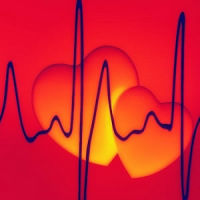New research published in the American Heart Association Journal Circulation: Cardiovascular Interventions shows that healthcare professionals who perform x-ray guided cardiovascular procedures may be at higher risk for health problems such as orthopeadic issues, cataracts, skin lesions and cancers.
The study highlights potential radiation-related health risks for professionals performing common cardiovascular procedures using fluoroscopy. These could include coronary angiography and coronary artery angioplasty that are commonly performed in cathertization lab.
The study was conducted with 466 workers with an average of 10 years experience working in the cath lab and 280 professionals who worked in other settings.
The study was conducted with 466 workers with an average of 10 years experience working in the cath lab and 280 professionals who worked in other settings.
"For experienced, busy interventional cardiologists and electrophysiologists, annual exposure to radiation is around 5 millisievert (mSv, a unit of measure for radiation's biological effects)," said Maria Grazia Andreassi, MSc, PhD., lead author of the study and head of the Genetics and Molecular Epidemiology Unit at the National Research Council Institute of Clinical Physiology in Pisa, Italy. That adds up to 50 to 200 mSv, or the equivalent of 2,500 to 10,000 chest X-rays, over a 30-year career.
As compared to healthcare professionals who are not exposed to radiation, cath lab workers who have been exposed to radiation for a medican of 10 years had 2.8 times higher odds of developing skin lesions, 7.1 times higher odds of having orthopeadic problems and 6.3 times higher odds of having cataracts. The estimated radiation exposure was also highest for interventional cardiologists and electrophysiologists. Odds of medical issues increased for workers who had more than 16 years of history working in the cath lab. The study also found that they were also 3 times more likely to have cancer and were likely to have elevated rates of high blood pressure and high cholesterol but low rates of cardiovascular illness. However, previous studies have found a link between chronic radiation exposure and long-term cardiovascular effects.
Andreassi said. "Occupational doses of radiation in cardiovascular procedures guided by fluoroscopy are the highest doses registered among medical staff using X-rays. Interventional cardiologists and electrophysiologists have a two to three times higher annual exposure than that of radiologists, as they are closer to the radiological source and experience radiation exposure with the patient, whereas diagnostic radiologists are generally shielded from radiation exposure."
Andreassi also points out that intensive training in radiation protection can reduce occupational doses dramatically but that every effort should be made to raise awareness among the affected professional communities. Cardiologists do not pay much heed to monthly or cumulative reports of radiation exposure and effective protection measures such as a lead curtain, protection glasses and thyroid collars are not used by the majority of cardiologists who are exposed to such radiation.
Source: American Heart Association Journal Circulation: Cardiovascular Interventions
Image Credit: Wikimedia Common
Andreassi said. "Occupational doses of radiation in cardiovascular procedures guided by fluoroscopy are the highest doses registered among medical staff using X-rays. Interventional cardiologists and electrophysiologists have a two to three times higher annual exposure than that of radiologists, as they are closer to the radiological source and experience radiation exposure with the patient, whereas diagnostic radiologists are generally shielded from radiation exposure."
Andreassi also points out that intensive training in radiation protection can reduce occupational doses dramatically but that every effort should be made to raise awareness among the affected professional communities. Cardiologists do not pay much heed to monthly or cumulative reports of radiation exposure and effective protection measures such as a lead curtain, protection glasses and thyroid collars are not used by the majority of cardiologists who are exposed to such radiation.
Source: American Heart Association Journal Circulation: Cardiovascular Interventions
Image Credit: Wikimedia Common
Latest Articles
Radiation Exposure, X-ray Guided Cardiovascular Procedures, fluoroscopy
New research published in the American Heart Association Journal Circulation: Cardiovascular Interventions shows that healthcare professionals who perform x-ray guided cardiovascular procedures may be at higher risk for health problems such as orthopeadic

























